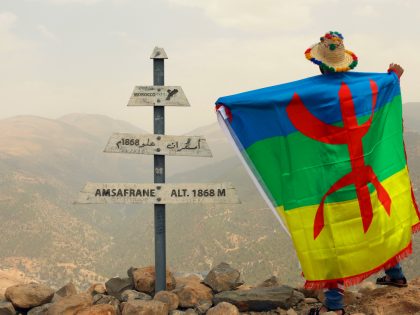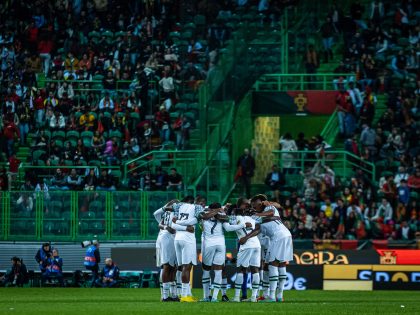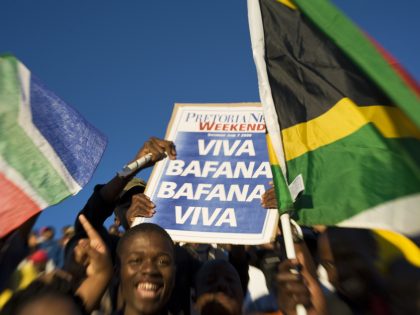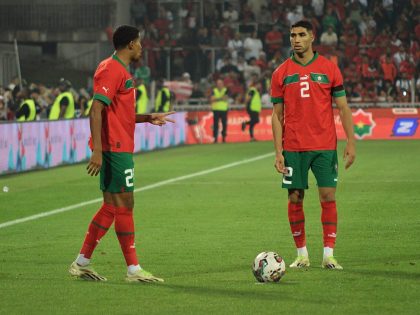The Kalahari cattle market
Land, landlessness and the German genocide of Namibians at the turn of the 20th century.

Germany returns Namibian skulls taken in colonial era
A scene in the outstretched countryside of Namibia, 2016. A dusty cattle auction is taking place on the edge of the Kalahari desert. Skinny cows are paraded in front of the tribune with buyers: about a dozen slightly overweight white men in khakis. The larger group of sellers on the tribune opposite consists exclusively of black small-scale farmers. It is a poignant scene from Dorothe Doerholt’s recent documentary on Herero fashion designer McBright Kavari. McBright’s uncle, who owns a small cattle farm, explains how every Herero growing up dreams of owning cattle one day. Yet the scene makes painfully clear why this often remains a dream: the majority of the commercial agricultural land in Namibia remains in possession of white farmers, while the Herero continue to be marginalized.
Like the Nama, the Herero lost everything during the colonial genocide in German South-West Africa (1904-1908) which cost the lives of 80% of the Herero and half the Nama, a total of about 75,000 people. Their land was dispossessed and sold to European settlers, whose descendants often still live on these farms today, growing up as the Namibian progeny of people who legally bought the land from German authorities – although it was not theirs to sell. It is this continued injustice that makes the current negotiations for apologies and reparations between Germany and Namibia so complicated. The economic marginalization of the Herero and Nama is a direct result of the genocide, fortified by decades of apartheid. But how to right these wrongs? Will financial compensation help the Herero and Nama descendants of victims of the genocide to regain their economic independence? Or is the economic inequality in the country rooted too deeply?
The seizure of land during the genocide was the culmination of a systematic policy of the German authorities to transfer all economic power to whites. Governor Theodor Leutwein (1894-1904) took advantage of a succession dispute among the Herero: the contested leader Samuel Maharero became dependent on German “protection treaties” to consolidate his power. After Leutwein had forced a “protection treaty” on Nama captain Hendrik Witbooi as well, the new allies embarked on campaigns against ‘rebellious tribes’ with the dual purpose of enlarging Maharero’s power sphere and freeing up land, cattle and (forced) labor for German settlers. Historian Jan-Bart Gewald describes the catastrophic consequences when Rinderpest struck the overcrowded territories left to the Herero. Their cattle herds were decimated, their economic independence shattered. By the late 1890s Herero society had ‘become dependent on the goodwill of the colonial state for its very existence’.
Against a background of German racial hatred, land loss, and widespread abuse, ‘peace’ in the colony was precarious. In January 1904 a local “uprising” of the Herero in Okahandja quickly spiraled into a full-scale war. General Lothar van Trotha, who replaced Leutwein, dispensed with all diplomatic facades and set out to physically destroy the Herero once and for all. They had no place in the German colony, as his infamous destruction order spelled out: “… within the German borders every Herero, with or without a gun, with or without cattle, will be shot.” Survivors were rounded up and put into concentration camps far from their home grounds. The Nama, who began their hostilities against the Germans in September 1904, suffered the same fate. Perversely, the Nama and Herero prisoners were made to construct the key infrastructures of the colony as forced labourers, building the railways that opened up their own confiscated lands to settlers.
The current negotiations force Germany to acknowledge and address the lasting and far-reaching consequences of these horrific events, still felt by young Herero and Nama in today’s Namibia. By 1908 the German government had acquired a total of 46 million hectares of land and Germans ‘of good repute’, many former soldiers, were encouraged to buy this land with interest-free loans.After the South African authorities took over the colony during the First World War, the best farmland continued to be sold to white farmers. Under apartheid, the genocide was wilfully forgotten, economic and social inequality formalized. Today’s calls for reparations draw attention to a deep scar from the colonial past: that Namibia has one of widest wealth gaps in the world – a gap epitomized by the divided tribunes of a dusty cattle market on the edge of the Kalahari desert.



















